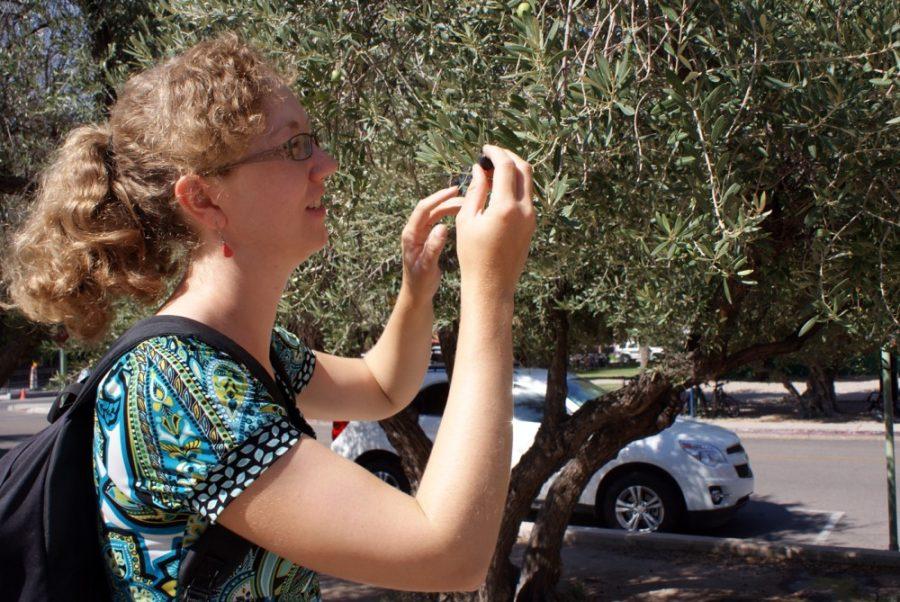UA students have obtained a UA Green Fund grant of roughly $7,000 to harvest olive, citrus and mesquite trees on campus.
The UA already harvests mesquite trees to provide mesquite flour for Dining Services, and Linking Edible Arizona Forests is trying to add harvested olives to the menu. Olives can be made into olive oil for the UA to use, according to Angela Knerl, a second-year graduate student with the School of Natural Resources and the Environment.
“If we had the olive oil, there would be hopes that further down the road we could incorporate it into the Dining Services like the mesquite flour was,” Knerl said.
Certain olive trees were being sprayed by Facilities Management, making them unsafe for harvesting, according to Knerl. LEAF is collaborating with the UA to get a Green Fund grant to harvest the olives this coming year. Facilities Management has agreed to stop spraying certain trees.
Harvesting the olives will mean the UA won’t have to pay to spray as many olive trees, and will lessen the amount of olives that fall to the ground and create a mess on the sidewalk, Knerl said.
Students can help LEAF by kicking the olives off of the sidewalk, which helps keep the campus clean, according to Knerl. They can also participate as student volunteers in the harvesting process for mesquite trees and olive trees.
“It is just part of … a groundswell of movement that’s happening around the country where people are realizing, ‘Why let this be so-called litter — when the fruit is falling to the ground and getting wasted — when it could be food?’” said Melanie Lenart, coordinating lead for LEAF on the UA campus and adjunct professor in the UA Department of Soil, Water and Environmental Science.
Past projects using sustainable foods include mesquite flour baking mixes sold in the UofA Bookstore, according to Maya Cross-Killingsworth, a microbiology sophomore and research intern with LEAF.
LEAF also works with a company called the Iskashitaa Refugee Network, which harvests dates, citrus and other fruits, according to Cross-Killingsworth.
“The idea is that there is so much food on a lot of plants that are being used as landscaping, that [you] might as well go ahead and eat it,” Cross-Killingsworth said. “A lot of the oranges on campus fall on the ground and just get scooped up — same with the mesquite pods — and someone, somewhere in Arizona thought, ‘Hey, we should eat that.’”
There are 1800 trees on campus with harvestable products, according to Lenart.
Students said they see the benefit of on-campus harvesting.
“It’s important to have organic foods and such so that we can all be at [the] peak of our health,” said Aline Diaz, a pre-journalism freshman. “I think it’s a really great way to make the most of our space. So it’s green space, it’s shade and it’s also the food we eat.”
Getting the word out to students is important, Cross-Killingsworth said.
“I don’t think a lot of people know how much food is available to eat on campus,” she said. “[Getting the word out to students is] definitely something we want to look at because there are 40,000 people sitting under all the mesquite trees going, ‘What are these
beans?’”
A previous version of this article incorrectly stated funding information about the project and about Facilities Management spraying trees. The article has been corrected to reflect these changes. The Daily Wildcat apologizes for its errors.
-Follow Maggie Driver @Maggie_Driver









